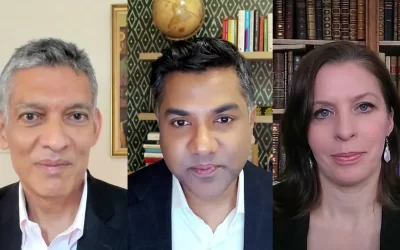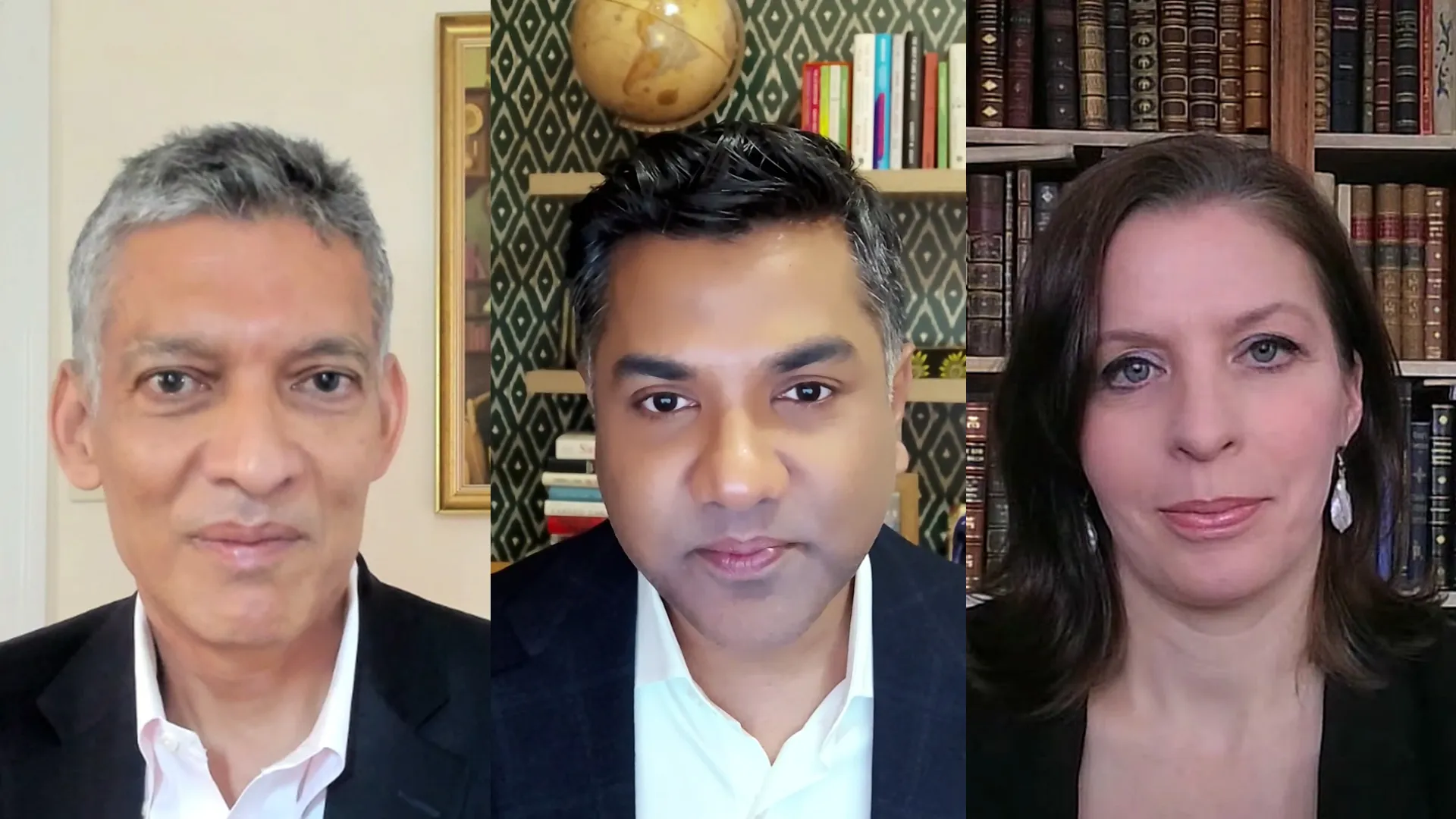America Is Its Own Worst Enemy

America Is Its Own Worst Enemy
It’s not unprecedented for a powerful country to simply shoot itself in the foot.
An attendee dressed like Uncle Sam waits for Donald Trump to arrive for a campaign rally at the Mosack Group warehouse on September 25, 2024 in Mint Hill, North Carolina. Brandon Bell/Getty Images
Those of us who work on foreign policy and international security tend to focus primarily on external threats and what can be done to minimize, deter, or defeat them. But for some strange reason, lately I’ve been thinking about the enormous damage countries sometimes inflict on themselves when their leaders voluntarily choose a foolish course of action and are either unable or unwilling to change course until it is too late.
States have good reasons to worry about foreign enemies, of course, and failure to take external dangers seriously and respond to them intelligently can have grievous consequences. Complacency is one danger, but countries that overreact to external dangers by launching unnecessary wars can also end up paying a huge price, as Germany and Japan did in World War II, the United States did in Iraq, and as Russia is doing in Ukraine. It’s no surprise, therefore, that people like me devote a lot of attention to assessing international problems and proposing various ways to deal with them.
Those of us who work on foreign policy and international security tend to focus primarily on external threats and what can be done to minimize, deter, or defeat them. But for some strange reason, lately I’ve been thinking about the enormous damage countries sometimes inflict on themselves when their leaders voluntarily choose a foolish course of action and are either unable or unwilling to change course until it is too late.
States have good reasons to worry about foreign enemies, of course, and failure to take external dangers seriously and respond to them intelligently can have grievous consequences. Complacency is one danger, but countries that overreact to external dangers by launching unnecessary wars can also end up paying a huge price, as Germany and Japan did in World War II, the United States did in Iraq, and as Russia is doing in Ukraine. It’s no surprise, therefore, that people like me devote a lot of attention to assessing international problems and proposing various ways to deal with them.
But misguided foreign or national security policies are not the only way that states can get into trouble. Mao Zedong’s erratic and willful leadership of Communist China stifled its economic development for nearly 40 years, and idiotic campaigns like the Great Leap Forward in 1958 or the Cultural Revolution in the 1960s caused millions of unnecessary deaths and left China far poorer and weaker than it would have been otherwise. Joseph Stalin’s imposition of collectivized agriculture had similar effects in the Soviet Union, as did Nikita Khrushchev’s ill-conceived “Virgin Lands” program in the 1950s. Argentina was a prosperous country at the beginning of the 20th century, with the 12th-highest per-capita income in the world, but decades of political dysfunction and repeated policy mistakes derailed its progress and caused repeated economic crises. Venezuela was once the richest country in South America, but incompetent leadership under Hugo Chávez and Nicolás Maduro has destroyed its economy and caused millions to flee. Foreign enemies were not primarily responsible for any of these disasters; the blame rests almost entirely with the people in charge.
Similarly, it is hard to argue that any foreign enemy has done as much harm to the United States as we have done to ourselves. In terms of killed and wounded, the U.S. Civil War is still the costliest conflict in American history. Al Qaeda killed nearly 3,000 people on Sept. 11, 2001, and caused billions of dollars of property damage, but the global war on terror cost many more U.S. lives and vastly greater amounts of money. More than a million Americans have died from gun violence since 1990—a much higher percentage of the population than in any other advanced country—and this sorry statistic is solely due to domestic policy decisions. The opioid crisis that killed at least 500,000 was mostly the result of a drug company’s greed, and the current danger from fentanyl is largely due to the long-standing tendency to treat drug abuse as a war to be waged against foreign criminals and not as a public health problem. Nobody forced the United States to support China’s entry into the World Trade Organization prematurely or to deregulate financial industries to the point that a meltdown was inevitable, and foreign enemies aren’t fueling the crypto and meme-coin mania that could trigger the next one.
This situation isn’t that surprising. Because the United States is wealthy and powerful and in a favorable geographic location, it is hard for any foreign actor to do as much damage to us as we can do to ourselves. The obvious question, therefore, is: What conditions make it more likely that U.S. leaders will shoot the country in the foot?
As I’ve noted before, one of the best guides to this issue is the late James Scott’s masterful Seeing Like a State: How Certain Schemes to Improve the Human Condition Have Failed. The book examines a series of cases where countries undertook disastrous policy steps entirely on their own initiative, convinced that these policies would produce dramatic, positive results.
Scott argues that these massive policy missteps resulted from two main factors. The first was unchecked power: The leaders in these states were free to do whatever they wanted, and there were no strong institutions that could force them to correct their own mistakes. Second, these leaders were also guided by powerful “high modernist” ideologies, worldviews that purported to rest on a rational and/or quasi-scientific basis. The Marxism-Leninism that guided both Stalin and Mao is a perfect example, as it claimed to provide the One True Answer to society’s problems. Combine the two factors, and you get leaders who are sure of themselves, dismissive of details and disinterested in local conditions, and immune to countervailing pressures. Under these conditions, a government can do enormous and lasting damage without even being fully aware of it.
Which brings us back to the United States today. What do Scott’s insights tell us about the events that are unfolding before our eyes?
Nothing good.
It is now blindingly obvious that President Donald Trump wants unchecked executive power, and neither the House nor the Senate seems willing or able to resist the administration’s efforts to usurp the powers the Constitution confers on Congress. Approving unqualified cabinet appointees is worrisome; surrendering its power over government spending is worse.
Will the courts check this power grab? Maybe, but a majority of Supreme Court justices support expanded executive branch power, and this court seems unlikely to do much to slow him down. And what if they tried? Imagine that the court ruled against the administration in an important case and Trump ordered his appointees to ignore the ruling and carry out his orders. Some career officials might refuse to comply, but they could be placed on administrative leave or fired outright. If the FBI, Department of Justice, Secret Service, U.S. marshals, and military obey the commander in chief, what are John Roberts or Elena Kagan or any of the other justices going to do to get the executive branch to stop, especially if appointees knew the president would pardon them should they get into legal trouble later?
Second, the administration is being guided not by an appreciation of the limits of knowledge, the inevitability of unintended consequences, the complex nature of a modern society, or the need to take local conditions into account (as Scott would have advised), but rather by the belief that they—like communists and fascists and other fanatics—have the One True Answer to all problems. It’s not quite high modernism in the sense that Scott used it, as it combines the religious extremism of white Christian nationalism (e.g., Pete Hegseth) with Silicon Valley techno-libertarian futurism (e.g., Elon Musk). The former is what is driving the assault on diversity and the effort to turn back the clock on women’s and minority rights; the latter is behind the gleeful wrecking-ball approach to government institutions and policies. Both strands of this movement are utterly convinced they are right, either because they think they are doing God’s will or because they see themselves as wizards whose mastery of technology will allow them to control the future. They are comfortable with an all-powerful presidency because it is a vehicle for implementing their utopian (and, in some cases, self-serving) schemes.
A few weeks ago, I suggested that we were already seeing “peak Trump,” and that the administration’s initial flurry of executive orders and wacky proposals would eventually bog them down in the courts, in Congress, and in the day-to-day realities of governing. I’ve become less confident that existing U.S. institutions are up to the task, however, as Congress seems content to rubber-stamp his actions, the courts move slowly, the Fourth Estate is divided and clueless, and universities and influential professional associations seem to be huddled into a protective crouch. Thus far, the checks and balances described in my high school social studies class don’t seem to be working very well.
What is more likely to bring this effort crashing down will be events in the real world, along with organized and nonviolent civil resistance. The marriage of convenience between the white Christian nationalists and the tech bros may not last, especially if things start to come unglued at home and Trump needs a scapegoat to blame (I’m talking about you, Elon). More importantly, the policies the administration is now pursuing will have serious negative consequences for millions of people. Red states that depend on flows of federal dollars are going to feel the pinch as the money dries up, ordinary people lose jobs, hospitals cut back, and basic services are imperiled. Scientific research will be crippled, at a moment when Chinese universities and research institutions appear to be soaring to new heights. Countries that were once reliably pro-American will start distancing themselves and looking for new markets and possibly new friends. Even if Trump’s tariff fetish never gets fully implemented, businesses at home and abroad will be wary of his unpredictability and look to reduce their vulnerability. For a scary forecast of where we may be headed, check out Nobel prize winner Daron Acemoglu’s all-too-plausible essay in the Financial Times.
As Scott and some other distinguished scholars warned, the danger with unchecked power is that autocrats may not realize their policies are failing (because subordinates and lackeys don’t tell them), and there’s nobody in a position to stop them even if they do get told. Nobody could stop Turkish President Recep Tayyip Erdogan from pursuing unorthodox economic policies that did enormous damage to the Turkish economy; it was soaring inflation and the reaction of global markets that eventually forced him to change course.
Which puts me once again in the awkward position of hoping things get bad sooner rather than later, before the damage to American democracy, the U.S. economy, and the knowledge-producing institutions that fueled its past success is beyond repair.
This post is part of FP’s ongoing coverage of the Trump administration. Follow along here.
Stephen M. Walt is a columnist at Foreign Policy and the Robert and Renée Belfer professor of international relations at Harvard University. Bluesky: @stephenwalt.bsky.social X: @stephenwalt
More from Foreign Policy
-

Russian President Vladimir Putin looks on during a press conference after meeting with French President in Moscow, on February 7, 2022. The Domino Theory Is Coming for Putin
A series of setbacks for Russia is only gaining momentum.
-

The container ship Gunde Maersk sits docked at the Port of Oakland on June 24, 2024 in Oakland, California. How Denmark Can Hit Back Against Trump on Greenland
The White House is threatening a close ally with a trade war or worse—but Copenhagen has leverage that could inflict instant pain on the U.S. economy.
-

Donald Trump speaks during an event commemorating the 400th Anniversary of the First Representative Legislative Assembly in Jamestown, Virginia on July 30, 2019. This Could Be ‘Peak Trump’
His return to power has been impressive—but the hard work is about to begin.
-

US Secretary of State Marco Rubio greets employees at the State Department in Washington, DC, on January 21, 2025. The National Security Establishment Needs Working-Class Americans
President Trump has an opportunity to unleash underutilized talent in tackling dangers at home and abroad.









Join the Conversation
Commenting on this and other recent articles is just one benefit of a Foreign Policy subscription.
Already a subscriber?
.
Subscribe
Subscribe
View Comments
Join the Conversation
Join the conversation on this and other recent Foreign Policy articles when you subscribe now.
Subscribe
Subscribe
Not your account?
View Comments
Join the Conversation
Please follow our comment guidelines, stay on topic, and be civil, courteous, and respectful of others’ beliefs.
Change your username |
Log out
Change your username:
CANCEL
Confirm your username to get started.
The default username below has been generated using the first name and last initial on your FP subscriber account. Usernames may be updated at any time and must not contain inappropriate or offensive language.